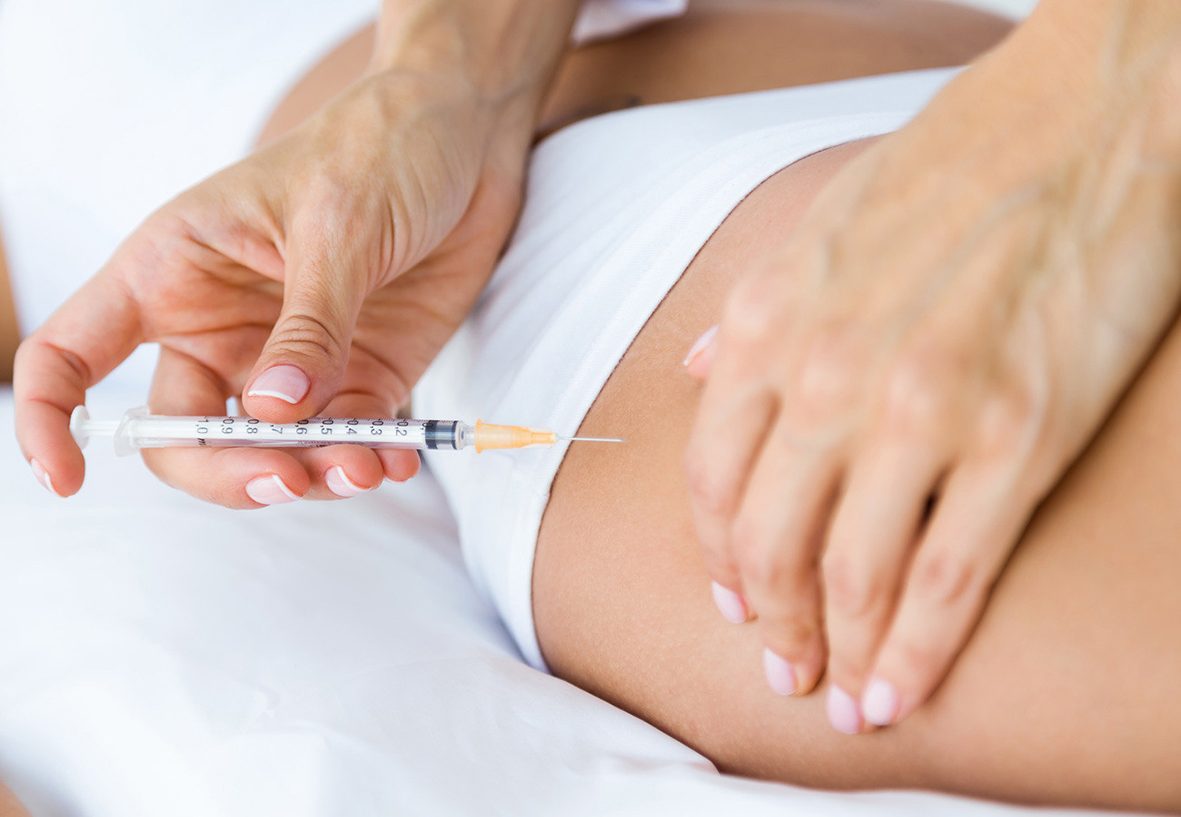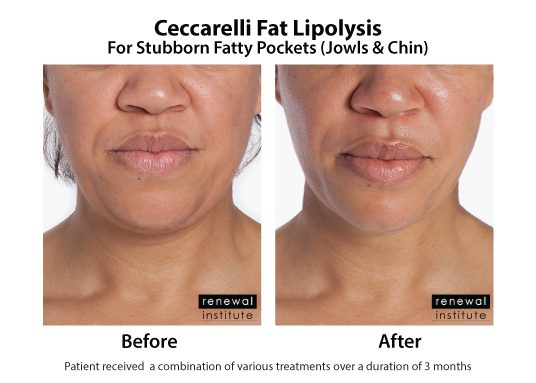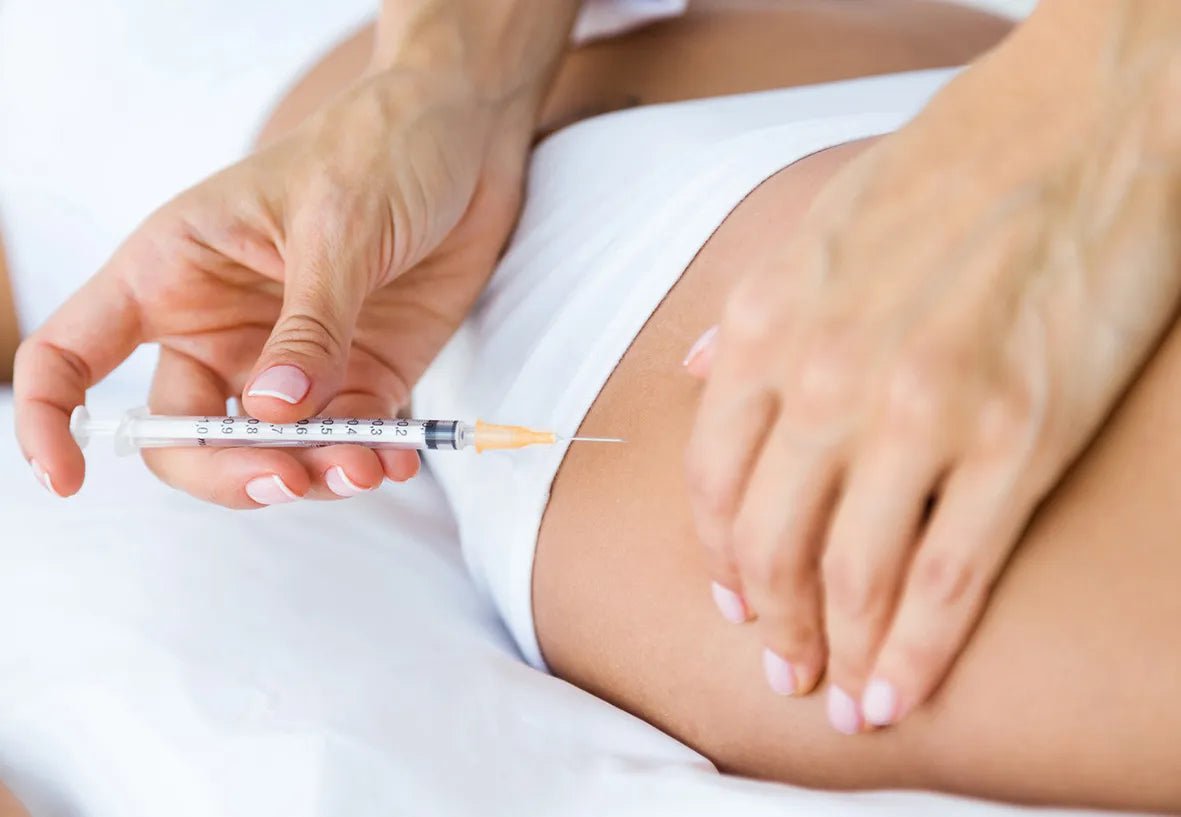Optimize fat reduction with lipolytic injections in South Africa
Are you looking to optimize fat reduction in South Africa? Look no further than lipolytic injections. These injections have gained popularity as a non-surgical, minimally invasive method to target and reduce unwanted fat in specific areas of the body. With their ability to break down and metabolize fat cells, lipolytic injections offer a convenient and efficient solution for those wanting to achieve their desired body shape. Whether you want to tackle stubborn belly fat or contour your thighs, lipolytic injections South Africa can help you achieve your goals effectively and with minimal downtime.
What are lipolytic injections?
Definition
Lipolytic injections South Africa, also known as fat-dissolving injections, are a non-surgical cosmetic procedure aimed at reducing localized fat deposits in various areas of the body. These injections contain a combination of ingredients that work by breaking down and dispersing fat cells, resulting in a more contoured appearance.
How do they work?
Lipolytic injections South Africa work by introducing specific substances into the body that target and break down fat cells. The ingredients in these injections, such as phosphatidylcholine and deoxycholic acid, act to disrupt the structure of fat cells and facilitate their elimination from the body. This process allows for targeted fat reduction without the need for invasive surgery.
Benefits of lipolytic injections
Lipolytic injections South Africaoffer several benefits for individuals seeking fat reduction in specific areas. Firstly, they provide a non-surgical alternative to procedures like liposuction, which can be more invasive and require a longer recovery period. Additionally, lipolytic injections can target small, stubborn fat deposits that are resistant to diet and exercise. This makes them an excellent option for those looking to refine their body contours and achieve a more sculpted appearance.
Common lipolytic injection ingredients
Lipolytic injections typically contain a combination of ingredients that work synergistically to break down fat cells. Some of the most common ingredients include phosphatidylcholine, deoxycholic acid, L-carnitine, and vitamins. These substances have been carefully selected for their fat-dissolving properties and safety profile.
Safety and side effects for Lipolytic Injections South Africa
Like any medical procedure, lipolytic injections carry a certain degree of risk. However, when performed by a qualified healthcare professional in a reputable clinic, the procedure is generally safe. Common side effects may include temporary swelling, redness, bruising, and discomfort at the injection site. These effects usually resolve within a few days or weeks. Severe complications are rare but can include infection or an allergic reaction to the injection ingredients. It is imperative to discuss any concerns or medical conditions with your healthcare provider before undergoing the procedure.
The fat reduction process
Understanding body fat
Before delving into how lipolytic injections target fat cells, it's essential to understand the nature of body fat. Fat cells, or adipocytes, store excess energy in the form of triglycerides. These cells can expand or shrink depending on energy balance and hormonal influences. Areas of the body with stubborn fat deposits tend to have a higher number of adipocytes, making it challenging to reduce them through conventional methods alone.
How lipolytic injections target fat cells
Lipolytic injections target fat cells by introducing substances that disrupt their cell structure. This disruption causes the fat cells to release stored triglycerides, which are then metabolized and eliminated from the body. The injected ingredients primarily function to break down the cell membranes of fat cells, leading to their demise and subsequent elimination.
Mechanism of action
The primary ingredients in lipolytic injections, such as phosphatidylcholine and deoxycholic acid, work together to disrupt the integrity of fat cell membranes. Phosphatidylcholine aids in breaking down fats, while deoxycholic acid facilitates the breakdown and absorption of fat by the body. These substances act selectively on fat cells while leaving surrounding tissues unaffected.
Factors influencing fat reduction
Several factors can influence the efficacy of lipolytic injections in fat reduction. The number and frequency of treatments, as well as the dosage and combination of injection ingredients, play a role in determining the extent of fat reduction. Additionally, individual factors such as metabolism, lifestyle, and overall health can influence the rate at which fat cells are dispersed and metabolized by the body.

Choosing the right clinic
Reputation and expertise
When considering lipolytic injections, it is crucial to choose a clinic with a reputable and established track record in performing these procedures. Research various clinics and look for those with positive reviews and a history of satisfied patients. The expertise and experience of the healthcare providers administering the injections are also essential factors to consider.
Qualifications and certifications
Verify that the clinic you choose has qualified healthcare professionals who are certified to perform lipolytic injections. These professionals should have the necessary training, licenses, and certifications to ensure safe and effective procedures. Don't hesitate to ask about their qualifications and credentials when consulting with the clinic.
Customer reviews and testimonials
Take the time to read customer reviews and testimonials about the clinic's lipolytic injection procedures. These reviews can provide valuable insights into other patients' experiences, giving you a better idea of the clinic's quality of care and the results they deliver.
Availability of lipolytic injections
Make sure the clinic you choose offers lipolytic injections and has experience in administering them. Some clinics may specialize in other procedures or may not have the necessary resources to provide lipolytic injections. Contact the clinic beforehand to confirm their availability and expertise in this specific treatment.
Cost of treatment
Consider the cost of lipolytic injections when selecting a clinic. Prices may vary depending on various factors, such as the number of injections required and the specific ingredients used. It is essential to understand the pricing structure and any additional fees associated with the treatment. Remember, choosing the cheapest option may not always guarantee the best results or highest quality of care.
Preparation for lipolytic injections
Medical assessment and consultation
Before undergoing lipolytic injections, you will likely need to undergo a thorough medical assessment and consultation with a qualified healthcare professional. This assessment will help determine your suitability for the procedure and ensure that there are no underlying medical conditions that could pose risks during or after the treatment. Be honest and transparent about your medical history and any medications you are currently taking.
Important considerations
Your healthcare provider will provide you with important instructions and considerations to follow before your lipolytic injection procedure. These may include avoiding blood-thinning medications or supplements in the days leading up to the treatment. It is crucial to follow these instructions carefully to minimize the risk of complications and ensure optimal results.
Avoidance of certain medications
Certain medications, such as non-steroidal anti-inflammatory drugs (NSAIDs) and blood-thinning medications, can increase the risk of bleeding and bruising at the injection site. It is important to inform your healthcare provider of all medications, including over-the-counter drugs or herbal supplements, that you are currently taking. They will advise you on which medications to avoid or discontinue before the procedure.
Preparing the treatment area
Your healthcare provider will give you specific instructions on how to prepare the treatment area before the lipolytic injections. This may involve cleaning the area with an antiseptic solution or refraining from applying any lotions or creams beforehand. Following these instructions helps ensure a clean and suitable environment for the injections.
Postponing lipolytic injections
If you have any active skin infections, open wounds, or are currently pregnant or breastfeeding, it may be necessary to postpone your lipolytic injection procedure. These factors can increase the risk of complications or adverse effects and should be discussed with your healthcare provider during the consultation.

The lipolytic injection procedure
Duration of the procedure
The duration of the lipolytic injection procedure can vary depending on the size and number of treatment areas. Generally, a single session can last anywhere from 15 minutes to an hour. Your healthcare provider will provide you with a more accurate estimate during your consultation.
Injection techniques
There are different injection techniques that can be used during lipolytic injections. These techniques may vary depending on the healthcare provider's preferences and the specific treatment area. Common techniques include multiple small injections, linear threading, or fan patterns. Your healthcare provider will determine the most suitable technique for your individual needs.
Pain management options
Lipolytic injections are generally well-tolerated, and any discomfort experienced during the procedure is usually minimal. However, if you are concerned about pain or discomfort, your healthcare provider may offer pain management options such as topical numbing creams or local anesthesia to ensure your comfort throughout the procedure.
Number of sessions required
The number of lipolytic injection sessions required varies depending on individual factors, such as the size of the treatment area and your desired results. Multiple sessions, typically spaced several weeks apart, may be necessary to achieve optimal outcomes. Your healthcare provider will discuss the recommended number of sessions during your consultation.
Combination treatments
In some cases, lipolytic injections may be combined with other cosmetic procedures to enhance results or address specific concerns. Your healthcare provider may recommend combining lipolytic injections with treatments such as radiofrequency therapy or skin tightening procedures to further contour and improve the treated area. Discuss any desired combination treatments with your healthcare provider during the initial consultation.
Managing post-treatment effects
Common side effects and their duration
After receiving lipolytic injections, it is common to experience some side effects, although these are typically mild and temporary. These may include swelling, redness, bruising, and tenderness at the injection site. These effects usually resolve within a few days or weeks, but individual experiences may vary. If you have any concerns or the side effects persist or worsen, it is important to contact your healthcare provider for guidance.
Recommended aftercare
Your healthcare provider will provide specific aftercare instructions to support the healing and recovery process. This may include applying ice packs, wearing compression garments, avoiding direct sunlight, and refraining from vigorous exercise or activities that may put strain on the treated area. Following these aftercare instructions diligently can help optimize results and minimize the risk of complications.
Avoiding strenuous activities
To avoid potential complications and optimize healing, it is generally advised to avoid strenuous activities, such as heavy lifting or intense workouts, for a specified period after lipolytic injections. Your healthcare provider will provide guidance on when it is safe to resume specific activities based on your individual circumstances and the treated areas.
Monitoring progress
Monitoring your progress and keeping in touch with your healthcare provider is crucial after receiving lipolytic injections. This allows any concerns or unexpected side effects to be promptly addressed. By closely following up with your healthcare provider, they can assess your progress, address any questions or concerns, and make any necessary adjustments to your treatment plan.

Expected results and timeline
Visible fat reduction
Lipolytic injections can lead to visible fat reduction and improved body contours. However, individual results may vary depending on various factors, such as the treatment area, the number of sessions, and individual biological responses. It's important to have realistic expectations and understand that lipolytic injections are not intended for significant weight loss but rather for targeted fat reduction.
Timeline for noticeable changes
After lipolytic injections, it may take several weeks or even months to see noticeable changes in the treated area. This is because the body needs time to metabolize and eliminate the disrupted fat cells. The timeline for noticeable changes varies between individuals, and it is important to be patient and consistent with any recommended follow-up treatments.
Maintenance and follow-up treatments
To maintain and optimize the results achieved from lipolytic injections, follow-up treatments may be recommended. Your healthcare provider will discuss a maintenance plan tailored to your specific needs and desired outcomes. This may involve periodic injections or the combination of lipolytic injections with other cosmetic procedures to further enhance and maintain the desired results.
Long-term results
The long-term results of lipolytic injections can be highly dependent on individual factors such as lifestyle, diet, and overall health. Adopting a healthy lifestyle, including regular exercise and a balanced diet, can help support long-term fat reduction and enhance the longevity of the results. Continual communication with your healthcare provider and following their advice will assist in preserving the achieved results for as long as possible.
Potential risks and complications
Allergic reactions
While allergic reactions to lipolytic injections are rare, they can occur in some individuals. It is important to inform your healthcare provider of any known allergies or sensitivities you may have before undergoing the procedure. Your healthcare provider will take the necessary precautions and may perform a patch test to ensure your safety.
Infection risks
Although the risk of infection is relatively low with lipolytic injections, it is important to adhere to all aftercare instructions provided by your healthcare provider. Keeping the treated area clean, refraining from touching or scratching the injection sites, and following proper wound care protocol can help minimize the risk of infection.
Skin irregularities
In some cases, lipolytic injections may lead to skin irregularities, such as lumpiness or unevenness in the treated area. These irregularities are usually temporary and resolve as the body metabolizes the disrupted fat cells. However, if any concerns persist or worsen, it is important to consult with your healthcare provider for further evaluation.
Unsatisfactory outcomes
While lipolytic injections can yield significant fat reduction and improved body contours, individual responses can vary. It is essential to have realistic expectations and understand that the procedure may not achieve the same results for everyone. Consult with your healthcare provider to discuss your specific goals and ensure accurate expectations are set before undergoing the treatment.
Scarring
Lipolytic injections are generally non-invasive and do not leave significant scarring. However, as with any injection procedure, there is a slight risk of minor scarring or skin discoloration at the injection sites. These effects are generally minimal and fade with time. It is crucial to follow post-treatment care instructions to optimize healing and minimize the risk of scarring.

Alternatives to lipolytic injections
Liposuction
Liposuction is a surgical procedure that entails the removal of excess fat through suction. It is a more invasive option compared to lipolytic injections and typically involves a longer recovery period. Liposuction may be suitable for individuals with larger areas of fat deposits or those looking for more significant fat reduction. Consult with a qualified plastic surgeon to determine if liposuction is a suitable alternative for your specific needs.
Non-surgical fat reduction techniques
Besides lipolytic injections, several non-surgical fat reduction techniques are available. These include procedures such as cryolipolysis (fat freezing), radiofrequency therapy, and high-intensity focused ultrasound (HIFU). These alternatives use different mechanisms to target and disrupt fat cells without the need for surgery. Discuss these options with your healthcare provider to determine the most suitable non-surgical fat reduction technique for you.
Changes in diet and exercise
Adopting a healthy lifestyle that includes a balanced diet and regular exercise can significantly contribute to fat reduction. While diet and exercise alone may not always target specific stubborn fat deposits, they can support overall weight loss and promote a healthier body composition. Lipolytic injections and other non-surgical techniques can be excellent adjuncts to diet and exercise for achieving targeted fat reduction.
Other cosmetic procedures
Depending on your goals and concerns, other cosmetic procedures may be suitable alternatives to lipolytic injections. These may include treatments such as body contouring surgeries, skin tightening procedures, or even laser-assisted liposuction. Consult with your healthcare provider to explore the different options available and determine the best course of treatment for your unique needs.
Cost and affordability
Cost comparison with other procedures
The cost of lipolytic injections can vary depending on several factors, including the number of sessions and the specific treatment areas. Compared to surgical procedures like liposuction or body contouring surgeries, lipolytic injections generally offer a more cost-effective solution for targeted fat reduction. However, it is important to consider the potential longevity of results and overall value for money when assessing affordability.
Factors influencing the cost
Several factors can influence the cost of lipolytic injections, including the reputation and expertise of the clinic, the qualifications and experience of the healthcare provider, and the specific ingredients used. Treatment areas, the overall treatment plan, and any additional services or combination treatments may also affect the cost. Discuss these factors with the clinic and healthcare provider to gain a clear understanding of the pricing structure.
Insurance coverage
Lipolytic injections are typically considered elective cosmetic procedures and are unlikely to be covered by insurance. Since lipolytic injections are performed for aesthetic purposes rather than medical necessity, it is important to confirm with your insurance provider whether any coverage or reimbursement options are available.
Payment options
Many clinics offer various payment options to accommodate different budgets. These can include payment plans, financing options, or accepting credit cards or debit cards. Discuss the payment options available with the clinic staff to determine a suitable arrangement for your circumstances.
Value for money
When considering the cost of lipolytic injections, it is important to weigh the value for money in terms of the expected results, the expertise and reputation of the clinic, and the overall experience and care provided. While it can be tempting to seek the lowest price, prioritize quality and safety when choosing a clinic. Investing in a reputable clinic with experienced healthcare professionals can offer greater peace of mind and more satisfactory results.






